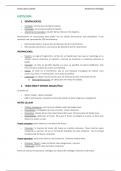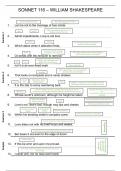Summary
Summary Human Biology - H15
- Module
- Institution
This summary Human Biology includes books, slides and lecture notes. Titles are clearly marked in color, and expressed figures are all included. The text is written in English. Good luck, it worked for me ;-)!
[Show more]







